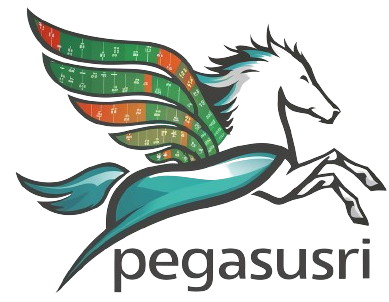Investing $1000 may seem like a small amount, but it can have a significant impact on your financial health. By making smart investment choices, you can set yourself up for a more secure financial future. In this article, we’ll explore the best strategies for investing $1000 in 2024, including building an emergency fund, paying off high-interest debt, investing in retirement plans, and exploring alternative investment options.
Building an Emergency Fund
Why You Need an Emergency Fund
An emergency fund is a crucial component of your financial health. It serves as a safety net, providing you with the resources to cover unexpected expenses without relying on credit cards or loans. Aim to save enough to cover three to six months of your living expenses in your emergency fund. This will give you peace of mind and financial stability during tough times.
Best High-Yield Savings Accounts for 2024
When building your emergency fund, consider storing your money in a high-yield savings account. These accounts offer higher interest rates than traditional savings accounts, allowing your money to grow faster. Some of the best high-yield savings accounts for 2024 include:
- LendingClub High-Yield Savings: Offers a 5.00% APY with no minimum balance requirement after opening
- UFB Portfolio Savings: Provides up to 5.15% APY with no minimum balance requirement
- Marcus by Goldman Sachs High Yield Online Savings: Offers a 4.40% APY with no minimum balance requirement
Paying Off High-Interest Debt
The Impact of High-Interest Debt on Financial Health
High-interest debt, such as credit card debt, can be a significant drain on your financial health. The longer you carry a balance, the more interest you’ll pay, making it harder to get out of debt. By using your $1000 to pay off high-interest debt, you can save money on interest charges and improve your overall financial situation.
Strategies to Pay Off Debt Quickly
One strategy to pay off debt quickly is to take advantage of balance transfer credit cards. The Wells Fargo Reflect® Card offers a 0% intro APR for 21 months on purchases and balance transfers. By transferring your high-interest credit card debt to this card, you can save on interest and pay off your debt faster.
Investing in Retirement Plans
Understanding Different Retirement Accounts
Investing in retirement plans is a smart way to secure your financial future. There are several types of retirement accounts, each with its own tax advantages and contribution limits. Two common options are:
- 401(k): An employer-sponsored retirement plan that allows you to contribute pre-tax dollars, often with an employer match
- Individual Retirement Account (IRA): A personal retirement account that offers tax advantages and flexibility in investment choices
Top IRA Options for 2024
If you’re considering opening an IRA, two top options for 2024 are:
- Charles Schwab IRA: Recognized as a top IRA account, offering a variety of investment vehicles for retirement savings
- Fidelity Investments IRA: Provides a range of options for retirement savings, suitable for both beginners and experienced investors
Certificates of Deposit (CDs)
What are Certificates of Deposit?
Certificates of Deposit (CDs) are time deposit accounts that offer a fixed interest rate for a specified term. CDs typically provide higher interest rates than regular savings accounts, making them an attractive option for savers. When you invest in a CD, you agree to leave your money in the account for a set period, usually ranging from a few months to several years.
Best CD Rates for 2024
Some of the best CD rates for 2024 include:
| Bank | APY Range | Term Range |
|---|---|---|
| Synchrony Bank CDs | 0.25% – 4.80% | 3 – 60 months |
| CFG Community Bank CDs | 4.40% – 5.50% | 12 – 60 months |
| Ally Bank® CDs | 3.00% – 4.50% | 3 – 60 months |
Low-Risk Investment Options
Money Market Funds Explained
Money market funds are investment vehicles that invest in low-risk debt securities, such as government bonds and commercial paper. These funds provide a safe and liquid investment option, making them suitable for conservative investors. Money market funds aim to maintain a stable net asset value (NAV) of $1 per share, offering investors a reliable place to park their cash.
Benefits of Investing in Treasury Bills
Treasury bills, or T-bills, are short-term government securities that mature in one year or less. They are considered one of the safest investments because they are backed by the U.S. government. Treasury bills offer guaranteed returns and tax advantages, making them an attractive option for low-risk investors.
Investing in the Stock Market
Why Consider Index Funds?
If you’re interested in investing in the stock market, consider index funds. These are mutual funds or exchange-traded funds (ETFs) that aim to replicate the performance of a specific market index, such as the S&P 500. Index funds provide diversified exposure to a broad range of companies, reducing your investment risk. They also tend to have lower fees than actively managed funds.
Using Brokerage Accounts and Investing Apps
To invest in the stock market, you’ll need a brokerage account. Many online brokers offer low-cost or commission-free trading, making it easy to get started. Some investing apps even allow you to purchase fractional shares, so you can invest your $1000 across multiple companies or funds.
Exploring Alternative Investment Options
Automated Investing with Robo-Advisors
Robo-advisors are digital platforms that provide automated, algorithm-driven financial planning services. They offer an easy, low-cost way to start investing, even with a small amount of money. Robo-advisors typically invest your money in a diversified portfolio of ETFs, based on your risk tolerance and investment goals.
Potential Returns from Peer-to-Peer Lending
Peer-to-peer lending platforms allow you to invest in loans made to individuals or businesses. By investing in a diversified portfolio of loans, you can potentially earn higher returns than traditional fixed-income investments. However, peer-to-peer lending also carries more risk, as borrowers may default on their loans.
Understanding Your Investment Goals and Risk Tolerance
Setting Clear Investment Goals
Before investing your $1000, it’s important to set clear investment goals. Are you saving for a short-term goal, like a down payment on a house, or a long-term goal, like retirement? Your investment goals will help determine the best investment strategy for your needs.
Assessing Your Risk Tolerance
Your risk tolerance is another key factor to consider when investing. If you’re comfortable with the potential for higher returns but also higher losses, you may be a more aggressive investor. If you prefer a more stable, predictable return on your investment, you may be a more conservative investor. Understanding your risk tolerance will help you choose investments that align with your financial goals and personal preferences.
Conclusion: Making the Most of Your $1000 Investment
Investing $1000 may seem like a small step, but it can be the beginning of a successful investment journey. By building an emergency fund, paying off high-interest debt, investing in retirement plans, exploring alternative investment options, and understanding your investment goals and risk tolerance, you can make informed decisions about where to invest your money.
Remember, the key to successful investing is to start early, invest regularly, and maintain a diversified portfolio. With the right strategies and a commitment to financial literacy, your $1000 investment can grow into a significant sum over time, helping you achieve your financial goals and secure a brighter financial future.
See also:






